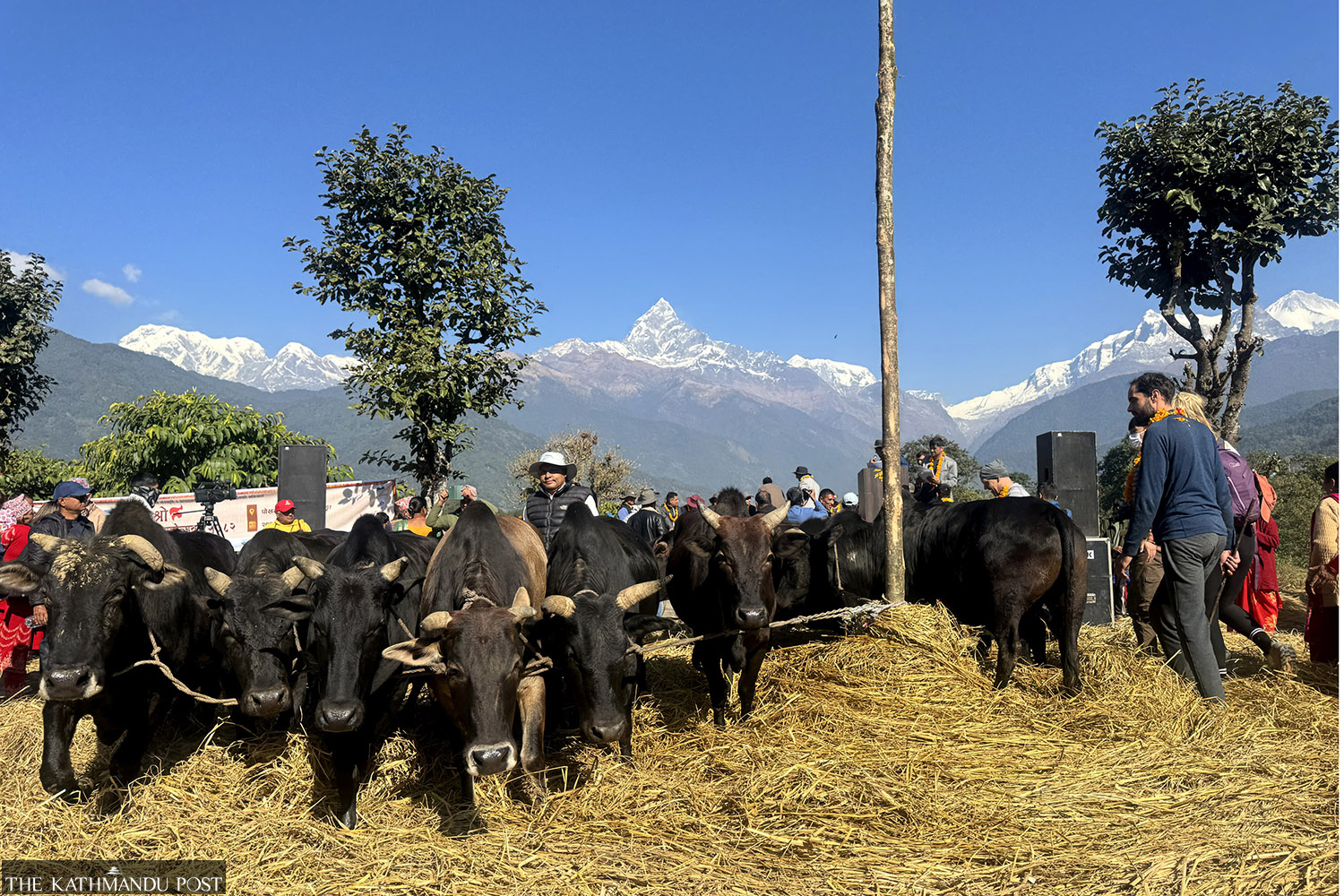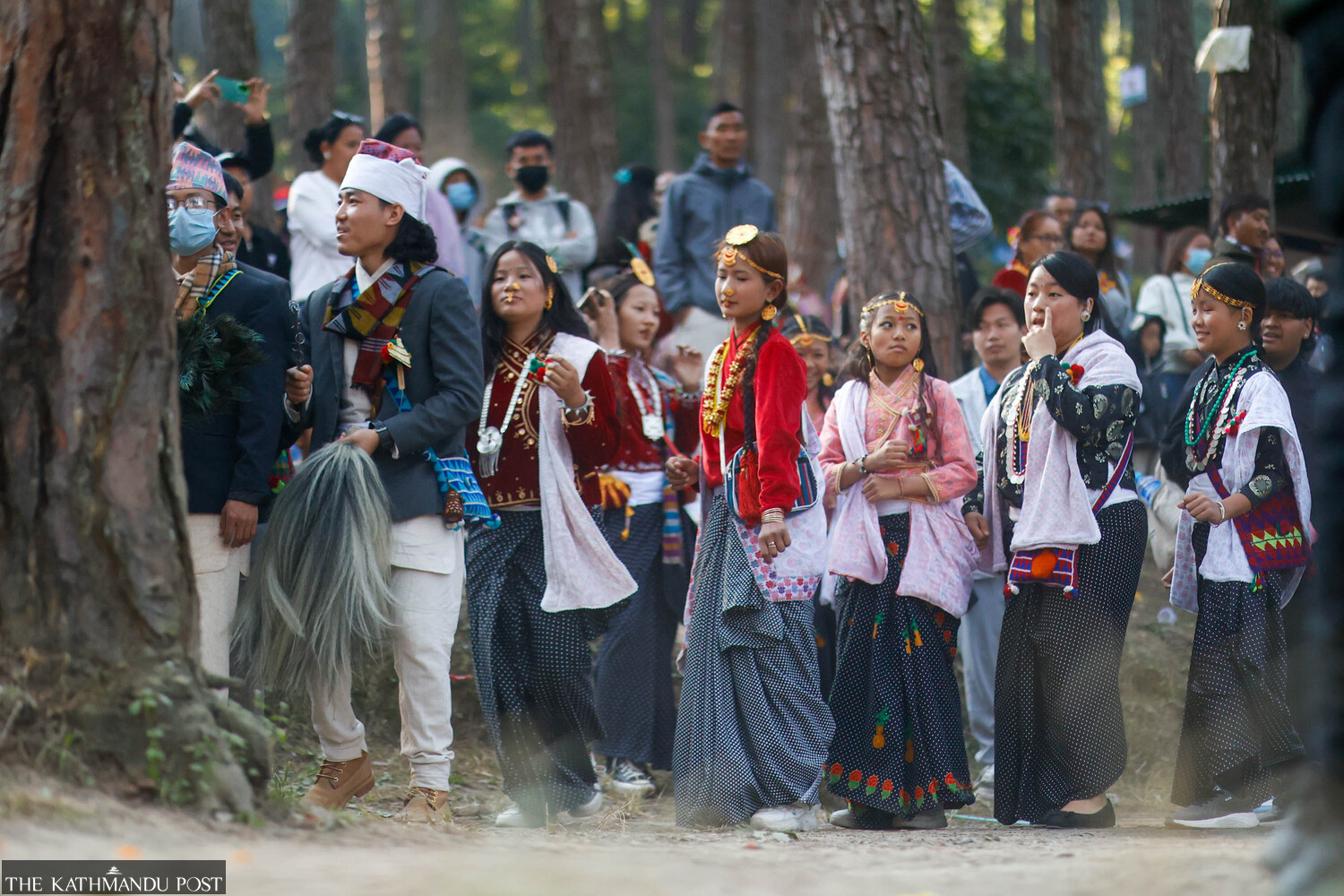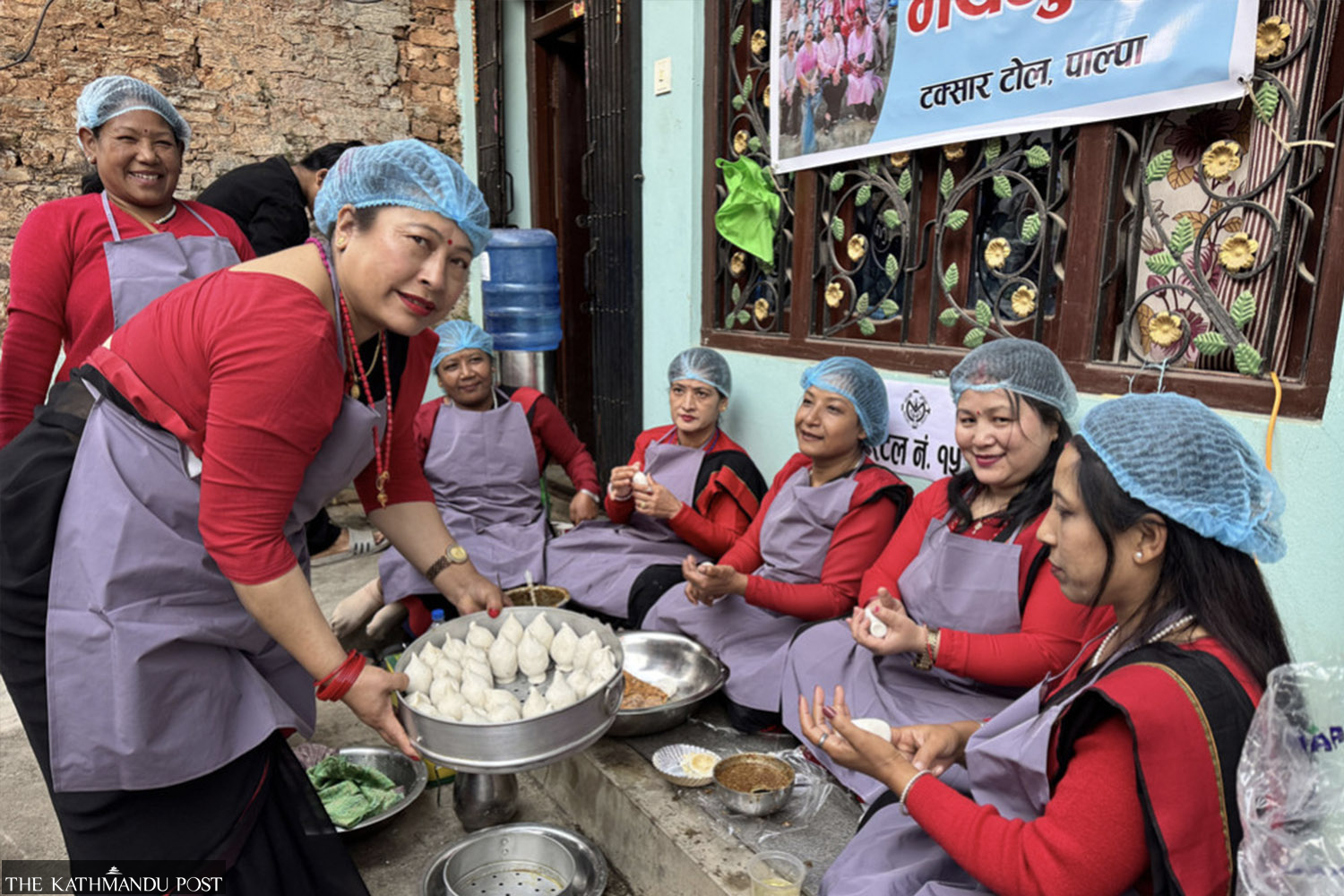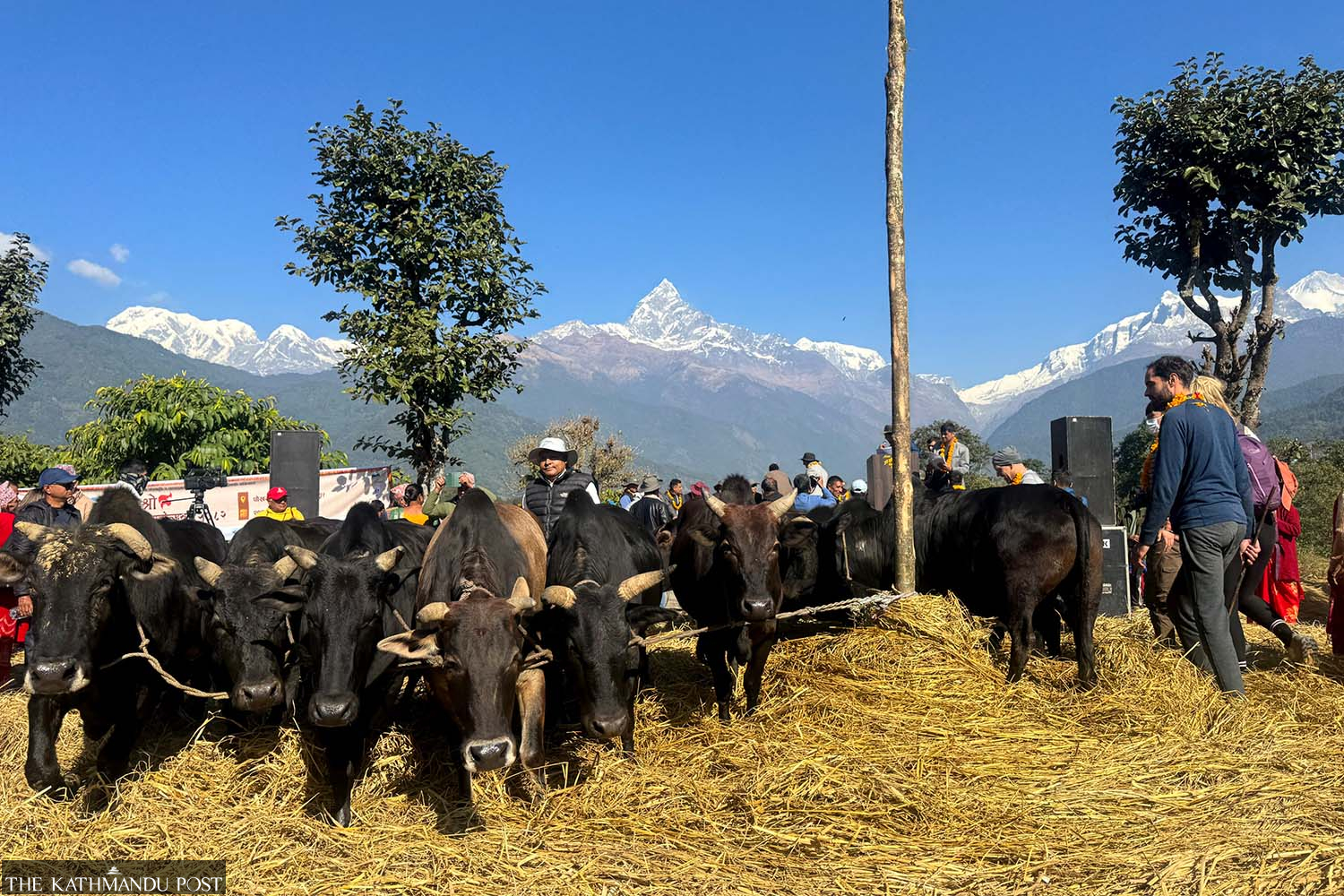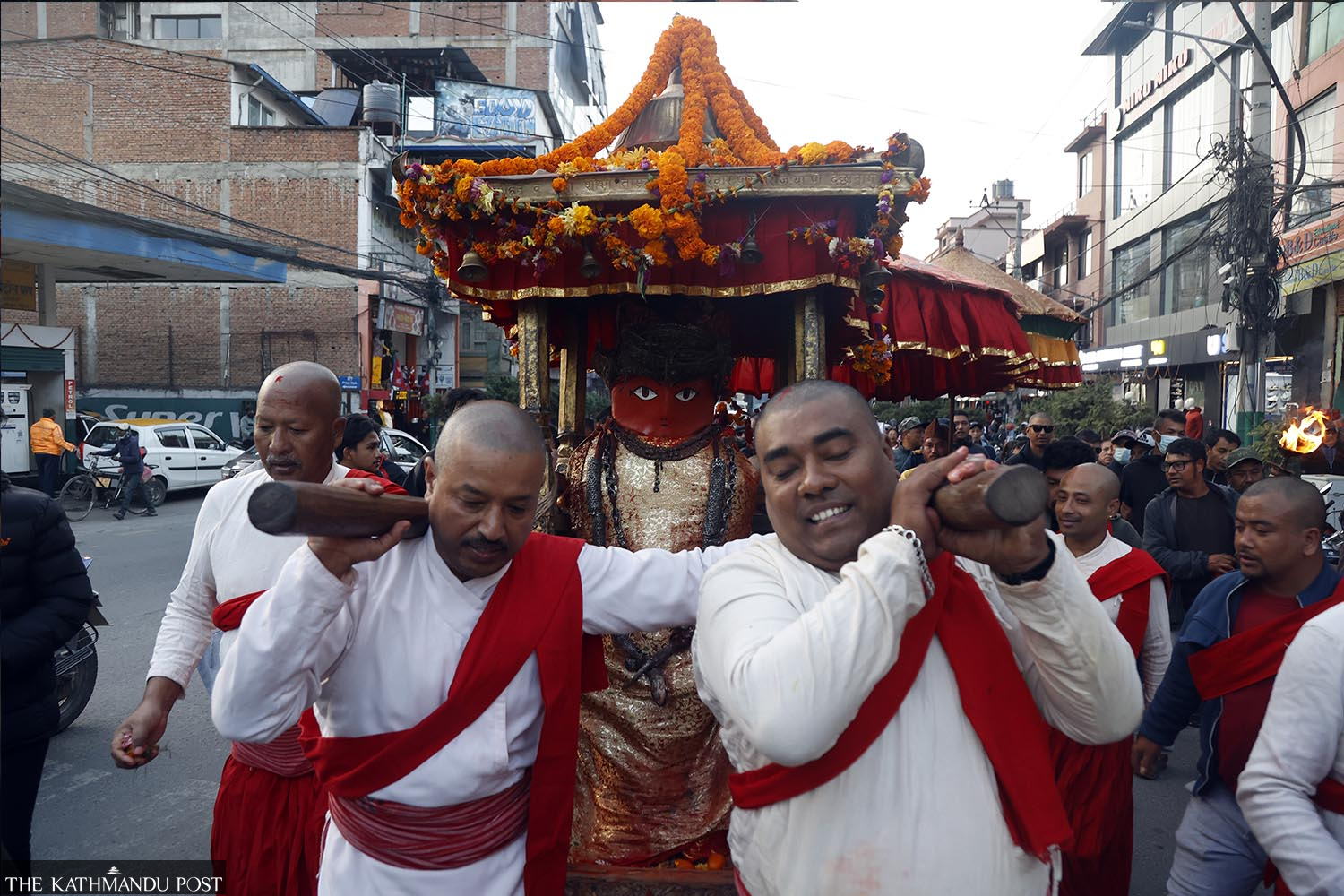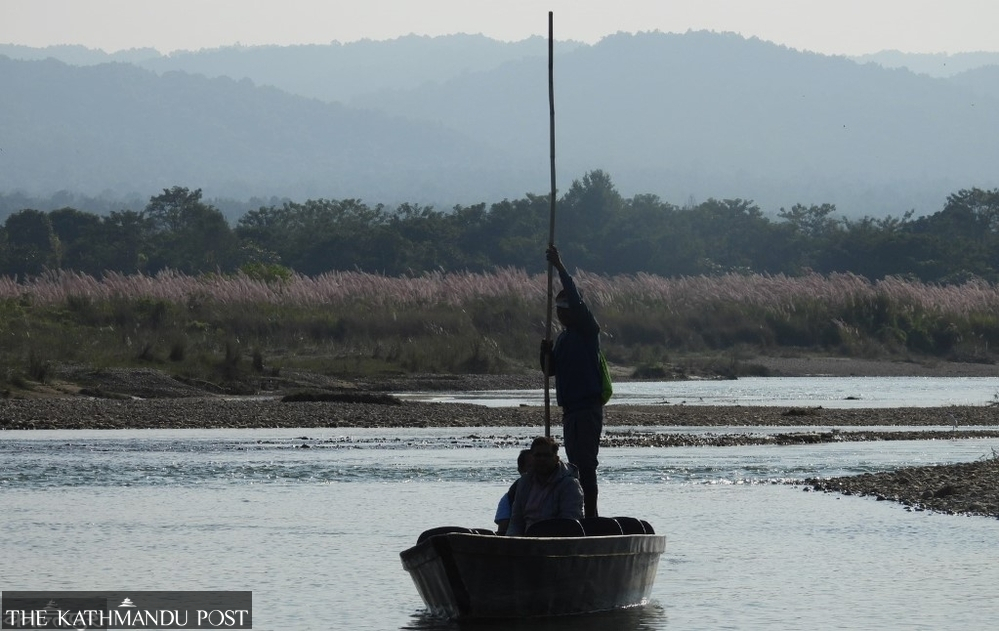Visual Stories
Where the river bends, a wounded gharial finds the sun
Spotted on the banks of Dhungre river, a gharial missing a leg offers a rare glimpse into the fragile lives of Nepal’s endangered river reptiles.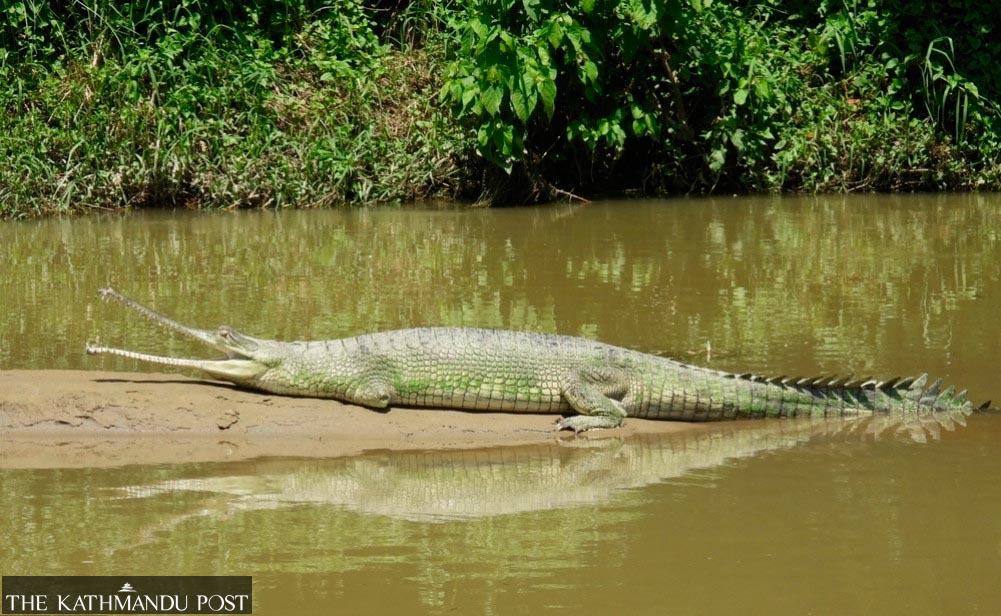
Ramesh Kumar Paudel
Gharials, fish-eating crocodiles that live in clean, unpolluted rivers, are becoming increasingly rare due to growing pollution and lack of food in their natural habitat.
These reptiles are mostly seen in the Narayani and Rapti rivers of Chitwan. One of Rapti’s tributaries, Dhungre Khola, flows between Janakauli and Kumroj Buffer Zone Community Forests before joining the Rapti about three kilometres downstream. Though no major flooding has occurred this season, the water in Dhungre Khola remains turbid.
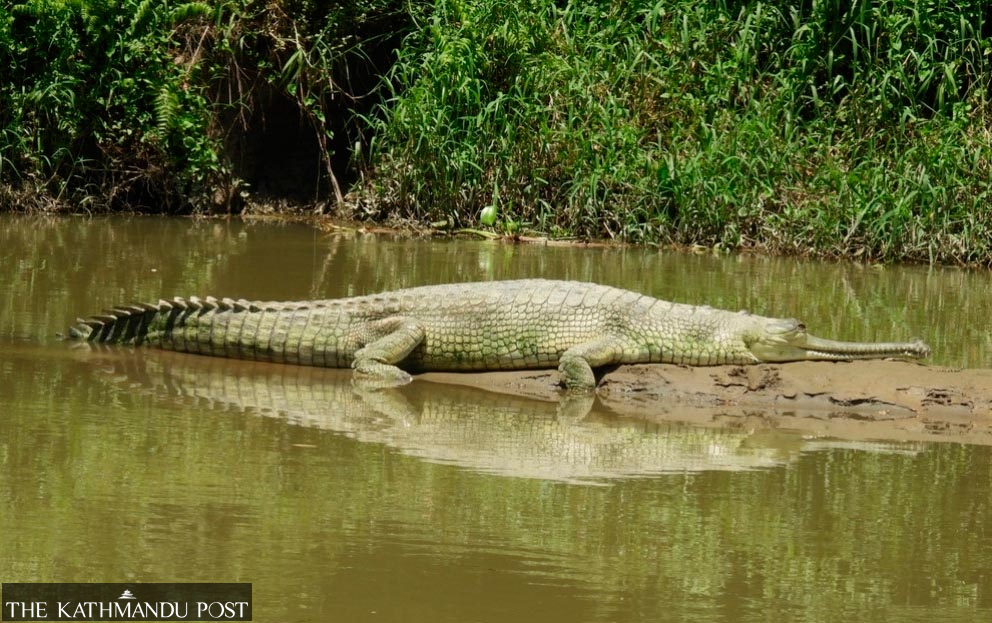
On Saturday around midday, two gharials were spotted basking on a sandbar along the riverbank. The first gharial, which arrived earlier, faced south and occasionally opened its long snout. A second one joined and sat facing north, remaining relatively motionless. The south-facing gharial had a noticeable difference—its front left leg was missing.
Sujita Shrestha, chief of the Gharial Breeding Centre based at Kasara in Chitwan National Park, said she had never seen such a gharial before. After reviewing the photograph, she estimated the gharial to be around eight or nine years old. Gharials often get injured or even killed after getting caught in fishing nets, though it remains unclear how this particular gharial lost its limb.
Nepal is home to two crocodilian species: the mugger and the gharial. Gharials are relatively shy and tend to stay within rivers and their banks, unlike the aggressive mugger crocodiles, which are found in various water bodies and are known for their long-range movements.
According to National Park conservation officer Sujita Shrestha, Chitwan currently has 352 gharials—206 in the Rapti River and 146 in the Narayani.
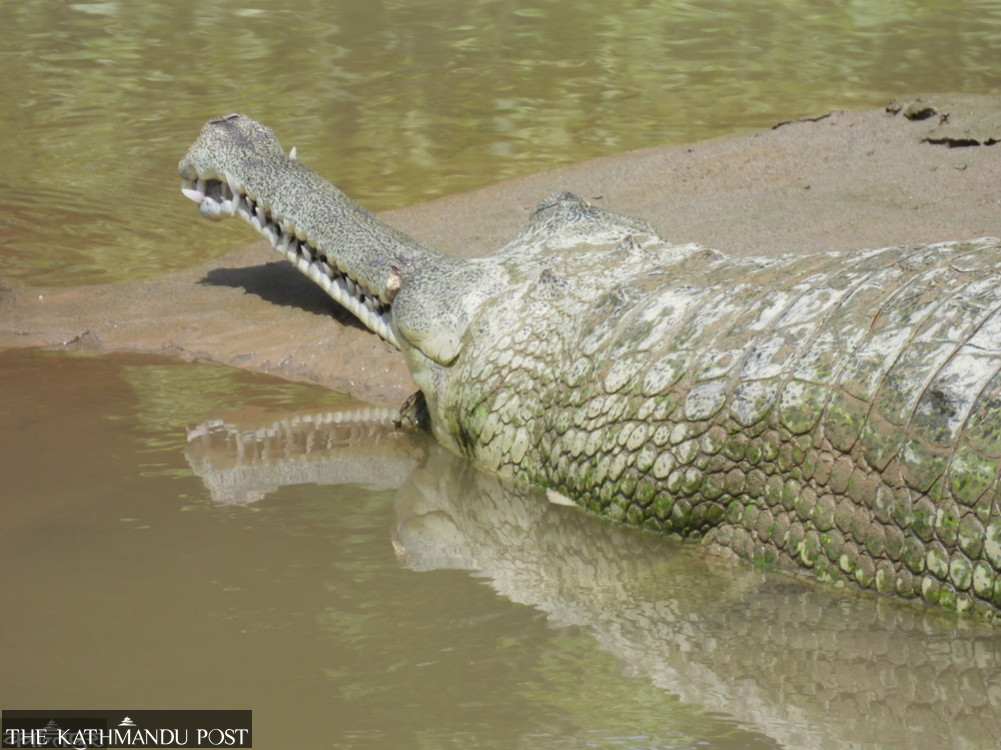
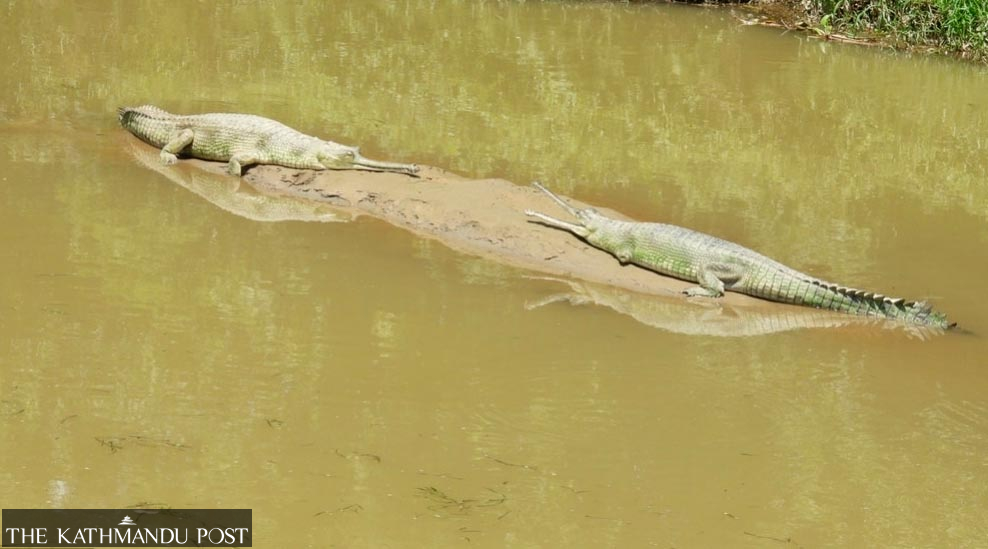
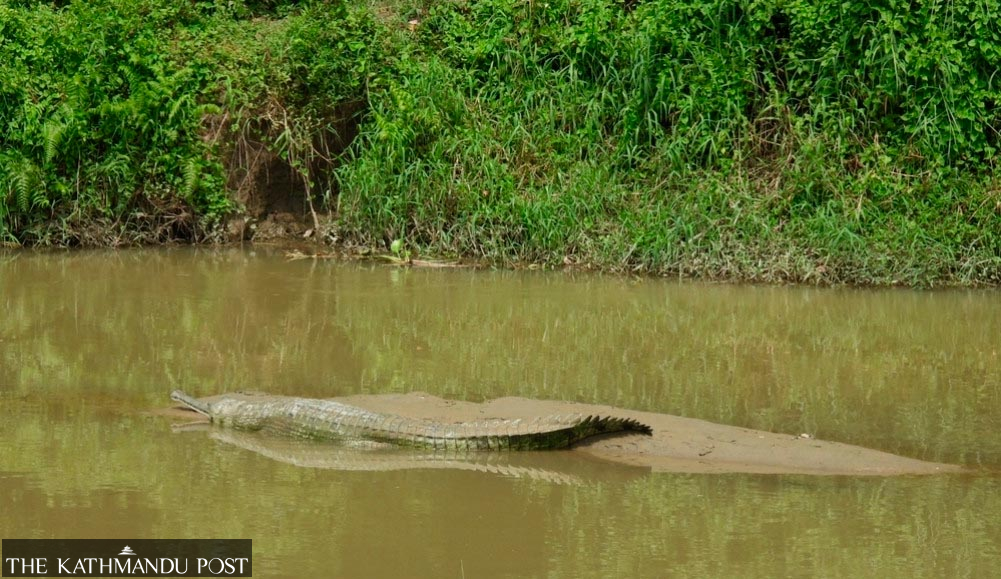
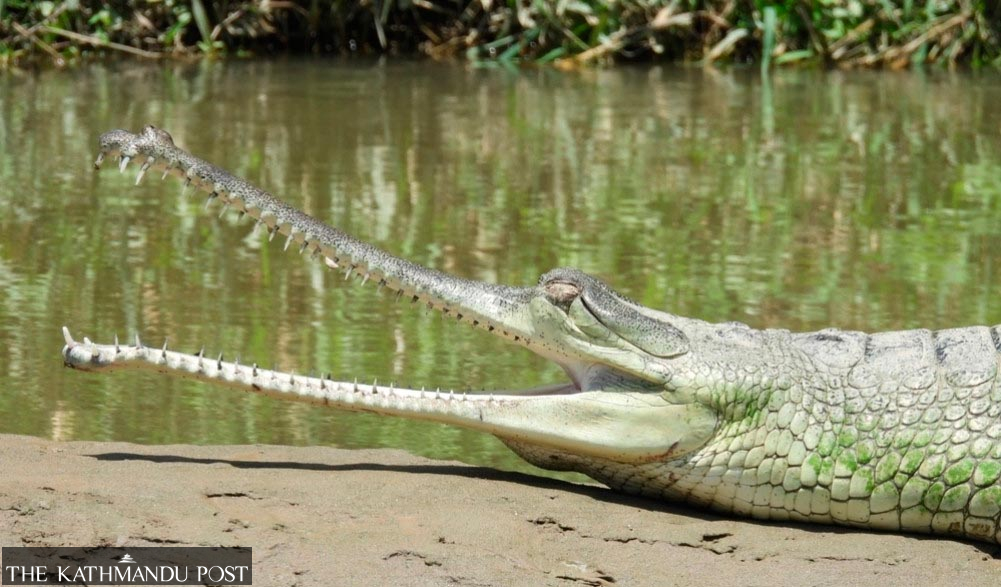
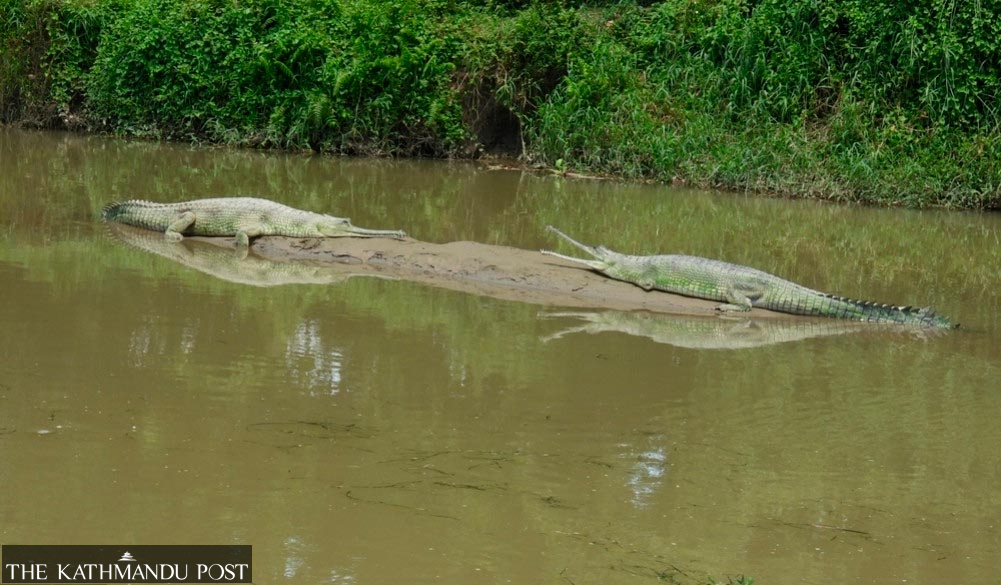
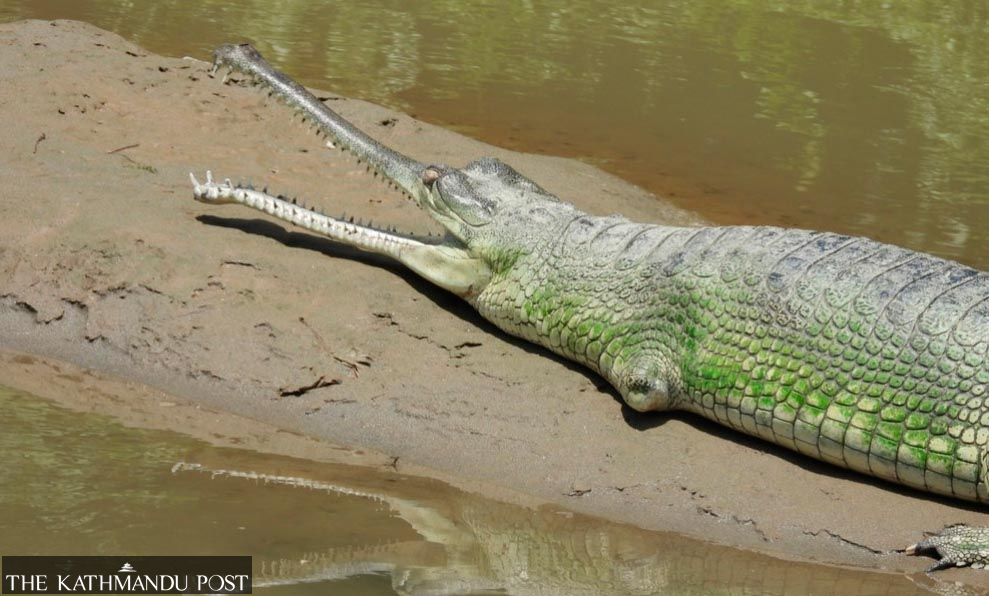




 8.12°C Kathmandu
8.12°C Kathmandu1.jpg)
